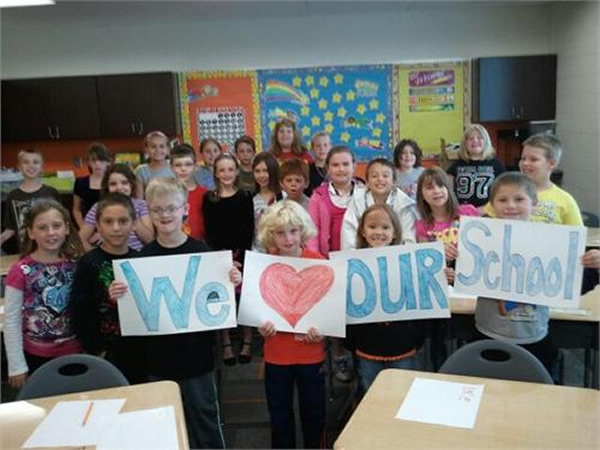
Last week my husband and I walked our two girls down the street for their first day of school. There was a strong sense of community and celebration as our children paraded into the building. We have a great school with incredible teachers, programs, and families and we feel fortunate to be a part of it.
Later that day, we received a letter from the administration telling us that our school had failed to make “adequate yearly progress” (AYP) and that it had been identified by the state as a school “in need of improvement.” In other words, our awesome, productive, wonderful school is one of those “failing schools” you hear about on the news.
It took me a few minutes to wrap my mind around this. I help in the classroom and have seen with my own eyes the great work going on at our school. I have seen the sense of community fostered by kids working together despite diverse backgrounds, languages and customs. I have seen pride on the faces of kids achieving goals or contributing to the school in unexpected ways. I have observed our creative and hardworking teachers and been amazed at the progress they make with students through the year.
How is it possible that our school is failing?
It’s “failing” because the one and only criterion used to distinguish a failing school from a successful school is the New England Common Assessment Program (NECAP) standardized test.
The data collected from these tests are judged in relation to standards set by No Child Left Behind federal legislation that says that 100% of students shall score proficient or above on standardized tests by 2014. This includes students who arrived last week from Somalia or Nepal, students with learning disabilities, migrant students, ESL students, students dealing with issues of survival or abuse at home. Every student, regardless of the context within which he or she lives.
Realistically, of course, 100% proficiency is not possible. All kinds of situations exist for students that make the NECAPS not a top priority in their lives, and our school works to help students overcome their individual challenges. That’s part of what makes it such a wonderful place.
In 2012 73% of Vermont schools and 70% of New Hampshire schools failed to make “Annual Yearly Progress.” Vermont Education Commissioner Armando Vilaseca says,”It is not surprising that as we get closer to the 2014 NCLB expectation of 100 percent proficiency, we will continue to see more schools not meeting AYP.”
And there are severe consequences tied to these statistical judgments of our schools. The most disconcerting are corrective actions like replacing the school staff, extending the school year or school day, or restructuring the internal organization of the school. If our test scores still don’t improve we face closure or takeover from the state. (http://www.greatschools.org/definitions/nclb/nclb.html)
Ironically, there is general consensus among education officials at local, state, and federal levels that No Child Left behind is now doing more harm than good and that it is punishing schools unfairly. Both Democrats and Republicans in Washington agree on this. What they can’t agree on is what to do about it.
In the meantime, I am frustrated on behalf of my school and the teachers and administrators who make it great. They work too hard and achieve too much to be treated as failures and threatened with losing their jobs. And I am afraid of what will happen to our school if Washington can’t come up with an alternative to No Child Left Behind.
I am proud of our neighborhood school. Is it too much to ask for it to remain intact?




Karen’s post addresses a hot topic in Vermont. For more on VT parents supporting their “failing schools,” check out Cathy Resmer’s article in this month’s KidsVT.
Well said! We also attend a “failing school” and are very frustrated with that label.